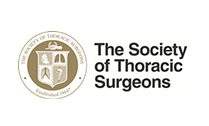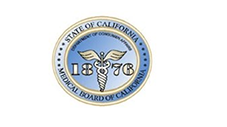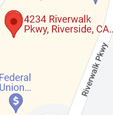Minimally Invasive Esophagectomy
Minimally invasive esophagectomy is a surgical procedure performed to remove the esophagus or a part of your esophagus. The esophagus is a tube shaped muscular organ that acts as a passage for food from your pharynx (part of the throat) to the stomach. After the removal of the esophagus, it is surgically replaced with tissue from a part of your large intestine or stomach.
Indications
Minimally invasive esophagectomy is most commonly indicated for treatment of esophageal cancer. Other indications involve treatment of the lower esophageal conditions which include:
- Achalasia (inability of the lower esophageal sphincter muscles to relax)
- Barret’s esophagus (damage of the esophageal lining from reflux)
- Trauma to the esophagus
Pre-Surgical Preparation
Before undergoing the procedure, your doctor will order medical tests and perform a physical examination. If you smoke and have not quit, you will have to stop smoking several weeks before the surgery. You should inform your doctor if you are pregnant, are taking any medicines or supplements, or consuming excessive alcohol.It is recommended to stop taking blood-thinning medicinesat least seven days before the surgery. Your doctor will inform you about the medications to be taken on the day of your surgery. You will have to avoid eating or drinking aftermidnight before the procedure; however on the day of the surgery medicines can be taken with a sip of water.
Surgical Procedure
Minimally invasive esophagectomy can be performed either laparoscopically or by using a robotic surgical procedure. The decision regarding type of surgery will depend on the location of the esophageal damage. These surgeries are performed under general anesthesia and take around 3 to 6 hours for completion.
Laparoscopic Surgery
Laparoscopic surgery involves making four small incisions of less than ½-inch in the chest, lower back or upper belly. Your surgeon will insert the laparoscope (instrument with a tiny camera at the end) into your upper belly through one of the incisions. The camera will allow your surgeon to view the internal organs on a monitor. Your surgeon will insert other medical instruments through other incisions. Then, the damaged part of your esophagus and the affected lymph nodes will be removed. After this, your surgeon will make use of stomach staples to divide the stomach. A part of your stomach will be removed to form a new food tube and will replace the removed esophagus. The new esophagus will be connected to the stomach and a feeding tube will be placed into your intestine. The feeding tube will be kept until your stomach and new esophagus heals.
Robotic Surgery
Robotic surgery involves the use of a robotic arm with surgical instruments to make small incisions in the skin through which a small camera and other instruments can be inserted. Robotic surgery is performed with your surgeon at a computer consoleviewing the surgery on a monitor. The robotic arm, surgical instruments and camera will be controlled by your surgeon through a computer program that precisely guides the robot to perform the task necessary to complete the surgery
Post-Surgical Care
Following the surgery, you will be in the intensive care unit for 1 to 3 days, and hospitalized for 7 to 14 days depending on your condition. To prevent blood clots,you will be advised to walk around and sit beside your bed on the same day of your surgery. A tube will be placed at the side of your chest to drain out the excess fluid. The feeding tube through the intestine will be placed for the first 2-3 days, after which you can begin a taking nutrition orally. You will begin with liquids and soft foods at first, and slowly progress towards solid food. Medications will be administered to relieve pain and discomfort.
Risks and Complications
As with any surgical procedure, minimally invasive esophagectomy involves certain risks and potential complications. They include:
- Loss of blood
- Infection
- Heart attack or stroke
- Injury to the internal organs
- Leakage of the fluid at the division of your esophagus and stomach
- Acid reflux
- Breathing problems due to anesthesia
- Blood clots in the legs
Many people recover well after minimally invasive esophagectomy. A normal diet can be followed once you recover. In order to avoid acid reflux, you can include low-acidic foods in your diet. If the procedure is performed for treating esophageal cancer, you may require chemotherapy or radiation after the procedure.



















